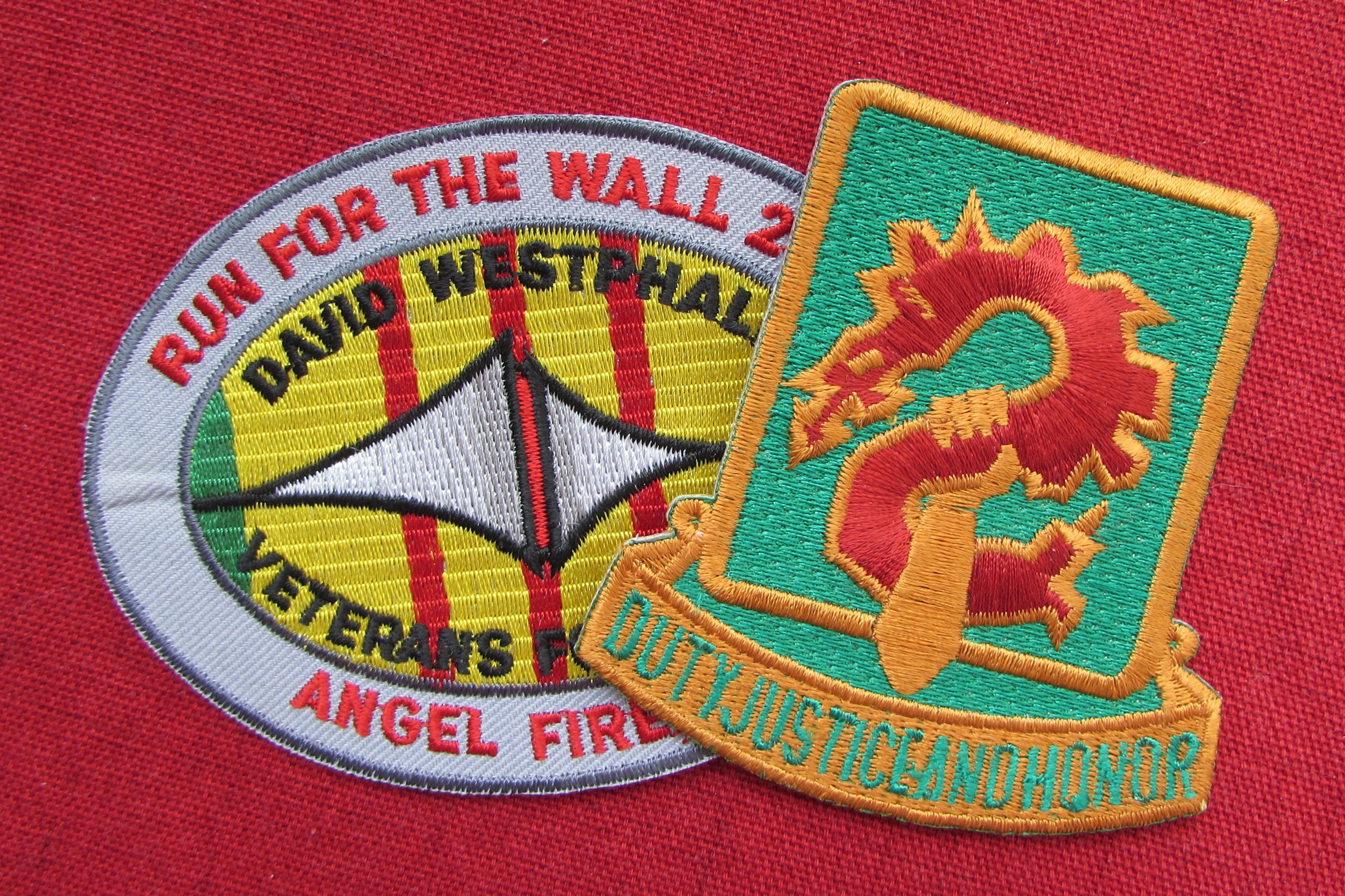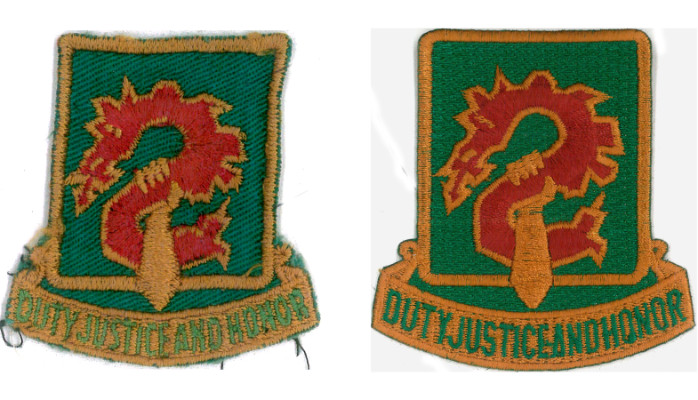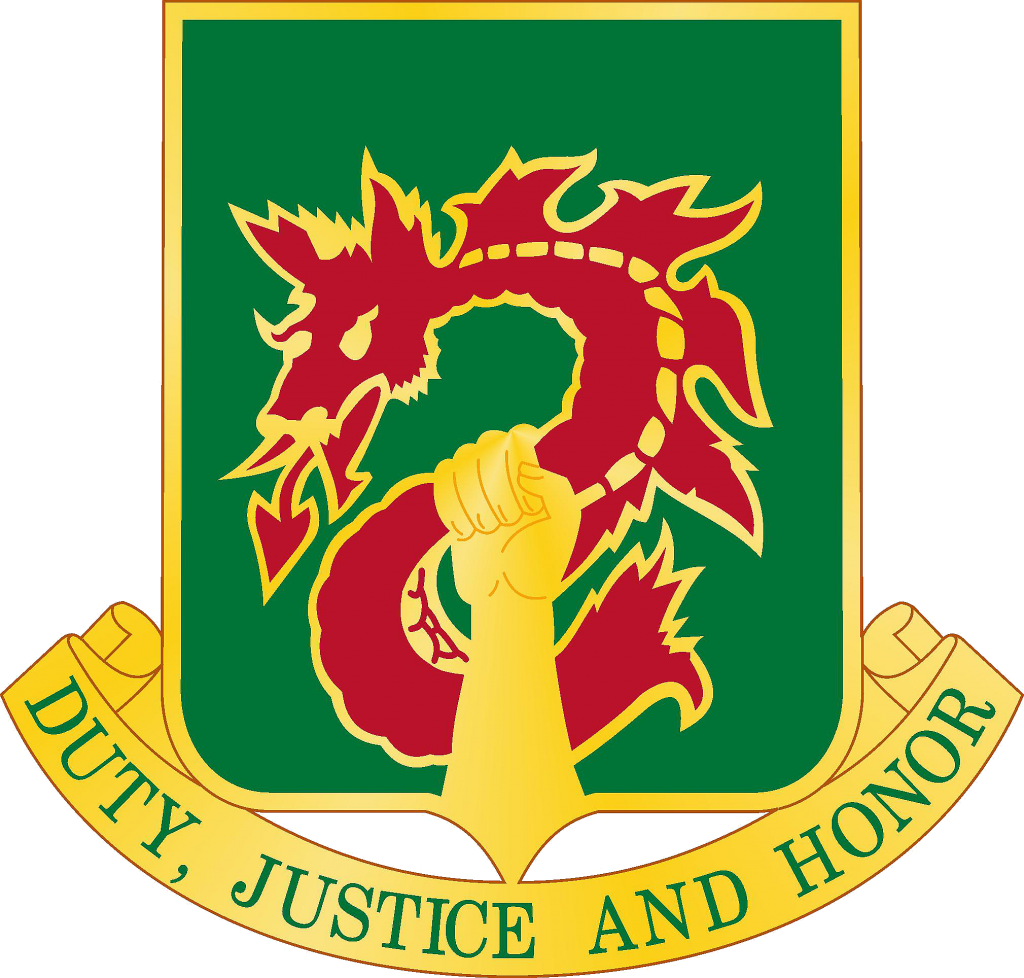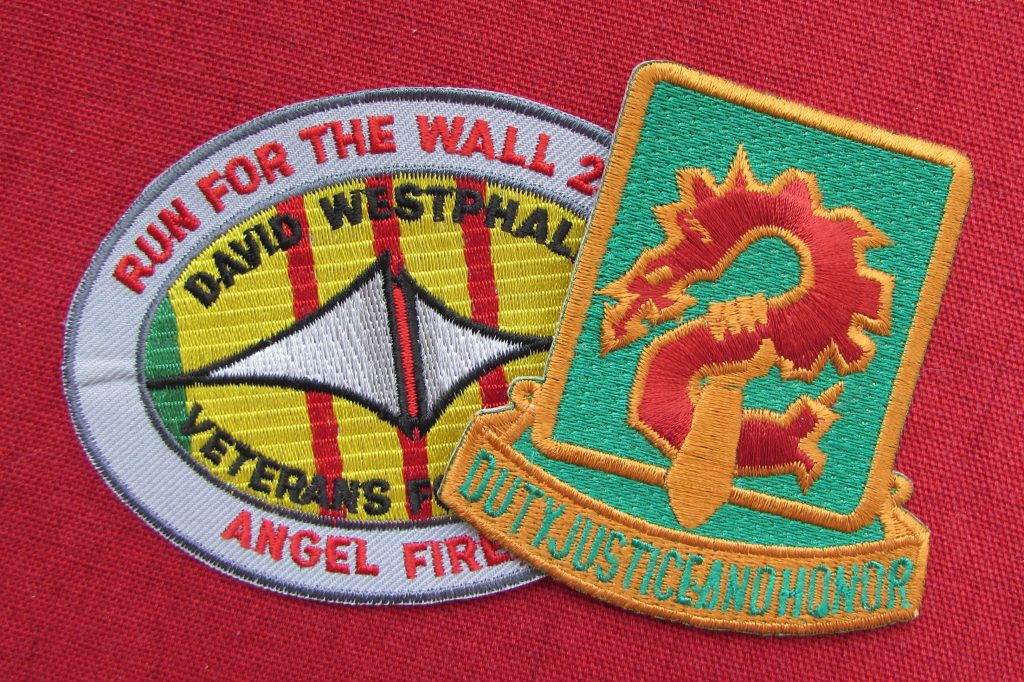
Veterans Day always finds me contemplating a time when I found myself face to face with a customer truly moved by my embroidery. Though I’ve had many happy customers, only a few have been sincerely emotionally affected by their first viewing of a piece. The thing that will surprise some decorators is that I hadn’t created an artistic triumph. This wasn’t a contest-winning, intensely detailed piece with lettering so small it defied the size of the needle and gradients smooth enough to seem printed; it was a piece consisting of 3 colors, and looked more than a little rough. The reason this man was moved, in my opinion, is that he felt as if someone had finally, sincerely listened to him.
He came to us with a simple request- replicate a vintage patch. He then produced a well-worn military patch, the threads that once attached it to his uniform still dangling loosely from its edges. This was the self-same unit emblem he had personally worn in Vietnam. He explained that other embroiderers had done work for him before, and each time, though what the other companies produced was essentially correct to the current specs for the unit’s art, none of them had ever made anything that looked like the patches and emblems he remembered. None of them were his patch, even though they’d seen the real thing. We didn’t want to hold on to that historical piece and risk losing what was obviously a very important memento, so my employer scanned it at a high resolution, and I left our customer with the assurance that I would do my best to recreate the piece, just as it was.

Being the once-scholar that I am, I took to some favorite resources and started to research his unit. I checked for official colors and art, and saw immediately where the others had missed the mark, albeit in their desire to do the best work possible. The old patch wasn’t true to the original emblem of the unit, nor were the colors correctly matched, and moreover some of interpretation was down-right wrong-headed. Parts of the badge border were mistakenly taken as part of the internal design and the detail seen in the official military art was nowhere to be found in the vintage piece. Moreover, subsequent patches people had reproduced were all created in a modern style; clean, outlined, with multiple colors and banners that matched like badges from other units. Not one example bore any resemblance to that roughly-made patch this customer had handed to me, and that was the problem. No clean examples of the original art would make my rendering of this design ‘better’ because ‘better’ embroidery was never the goal. The goal was for this man to share his memories with his peers- it was to enable his unit to wear their original emblem again, so many years after the war.

I decided to work from the original scan; placing it in my software, I measured, analyzed, and attempted to absorb the style of the original rendering. It was classically made with nearly no fill stitching, something I often attempt after many an experience studying such vintage pieces. it was full of depth and sheen, with a play of light that only can be had by carving a design from a series of turning satins. I was lucky to find that, at least in execution, I had some similarity of style with the artist who created the original. I found myself matching the clumsily-shaped plates on the dragon’s back, layering and overlapping the arm on the badge border where there should have been a decorated terminal, and tightly packing the lettering in colors that nearly prevented legibility. Even so, when I finished, though it was a little cleaner, a little straighter, and a little more symmetrical, there was no doubt that what I had made was a close match to that sacred reminder of my customer’s service. This was his patch.
We return to the moment with which I opened this post. I had the great fortune of being at our showroom counter to see the customer receive his patches. Almost as if transported into his memories, he set into a flurry of stories about his time in the service, telling me with wide eyes about his friends and compatriots, and about the many reunions they’d had since those fateful years. He thanked me over and over, and all I could say is that it was an honor to do the work. He bestowed upon me then one of the very patches we had just finished making. Though it’s not my way to take something a customer has just paid for, I couldn’t refuse. For after seeing how important it was to him, it had become important to me, too. I know that some people may think that I am overly sentimental when I have said that embroidery is very important to people, even to culture in general- but this is one more time that I can point to the sense of belonging, of history, and of identity that one expresses with these simple stitches.

All in all, the lesson I learned was seemingly obvious- it is paramount to attentively listen to our customers, no matter what we may think of their art or their reasoning; our work can be important to them. Not all commercial embroidery is as important as this piece was to my customer, but even the most basic and perhaps even the most poorly-designed image has something to say, and if we can, we should attempt it with both our best craft and our most careful consideration. One never knows what may become an heirloom with the lasting touch of our needles. This isn’t to say that we shouldn’t improve or design something new when we can benefit our customers, but it does mean letting our personal artistic judgments give way to creating something truly meaningful.
tags: 504th, drawing, ego, emblems, embroidery, listening, memory, service, veterans, war
LEAVE A COMMENT CANCEL REPLY
This site uses Akismet to reduce spam. Learn how your comment data is processed.








Thank you Erich for writing such a beautiful story on Veteran’s Day. You were there to hear the stories he needed to share of his friends and the reunions just because of the patch. My brother served in Viet Nam and he was never able to share any stories of what he experienced; never went to reunions because he just didn’t want to remember. Your embroidery talent is truly a gift for this man — you made His patch.
I’m just proud to be able to give him the space to share. The best thing we can do in any just about any situation is start by really listening. Thank you for reading and commenting!
maybe because I’m a old gal or maybe because the Viet Nam war was so prevalent to me growing up in our small town. We lost a lot of boys and men to this war during this time. As a nurse I have watched the aftereffects of Agent Orange to a lot of those who returned home. I’ve been witness to the emotional as well as the physical trauma on this group. Erich, the patch was awesome as well as the story that went with it. Thank you for capturing this man’s story so vividly and real.